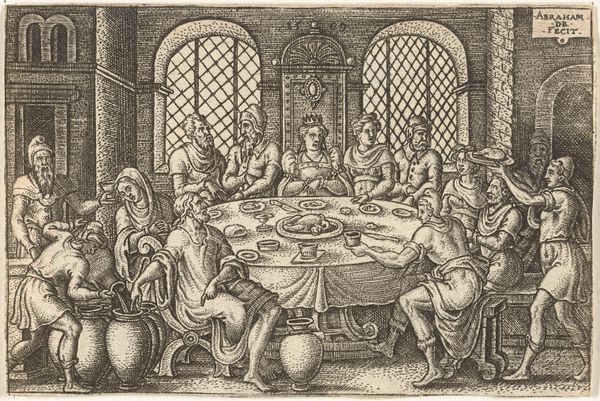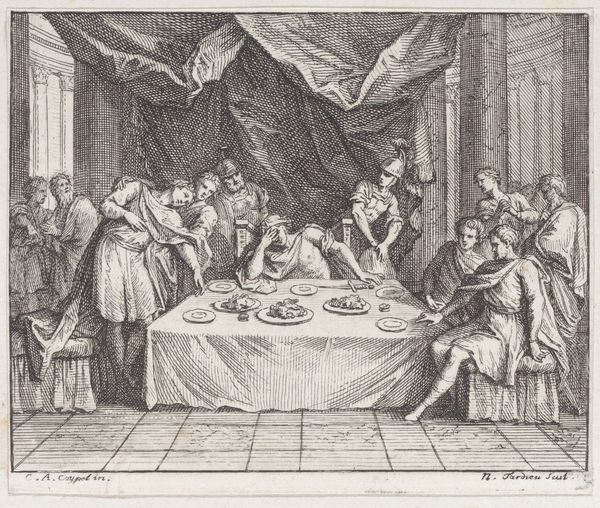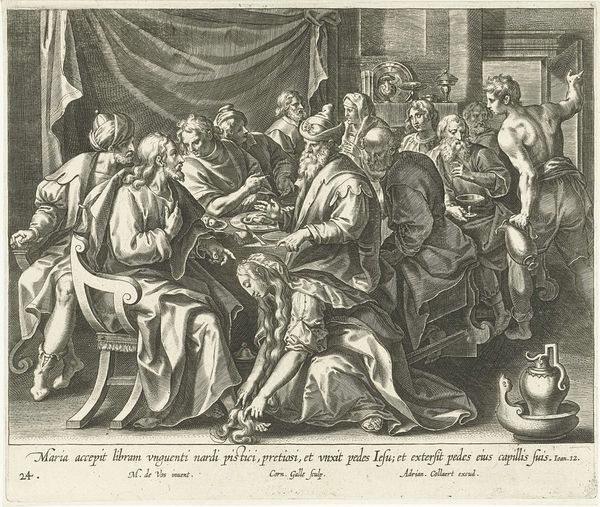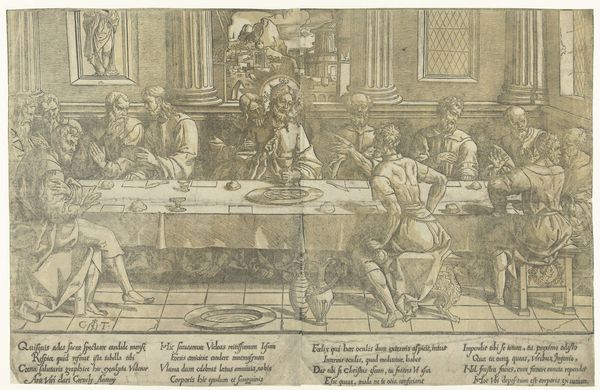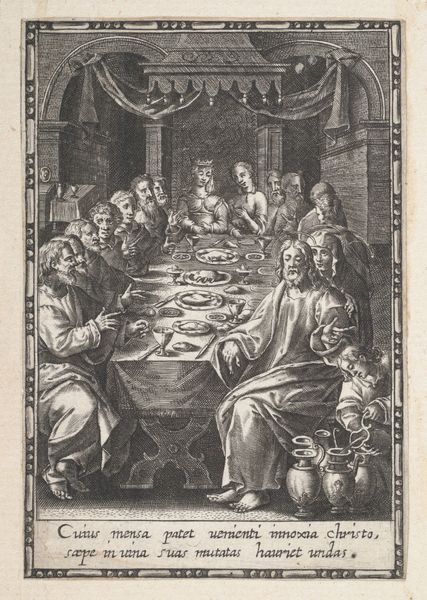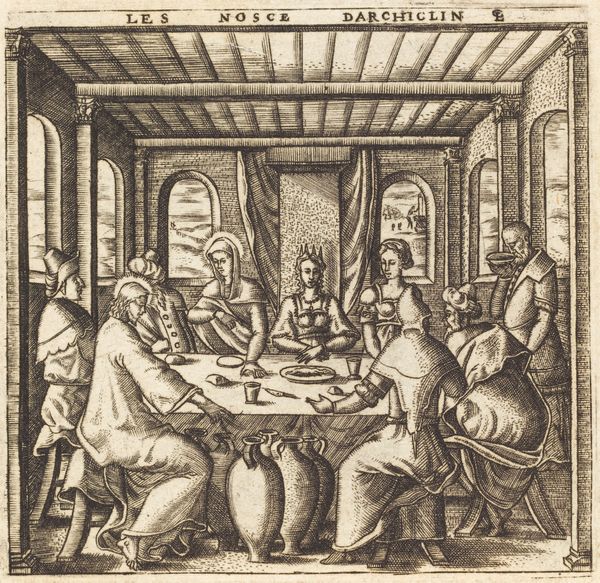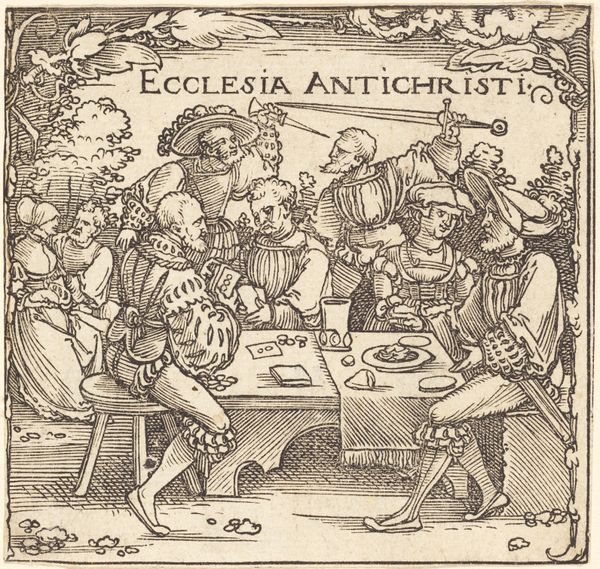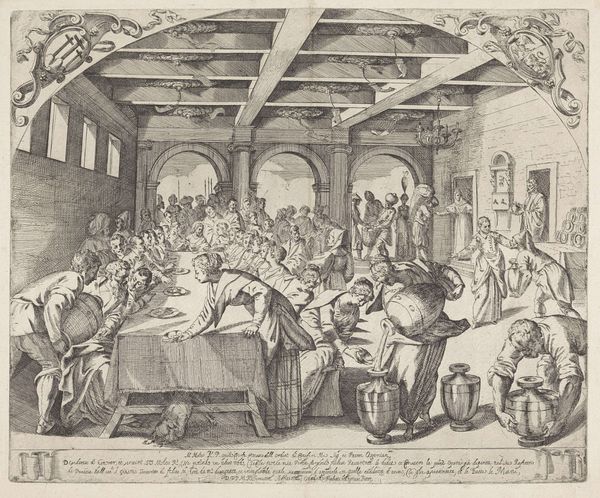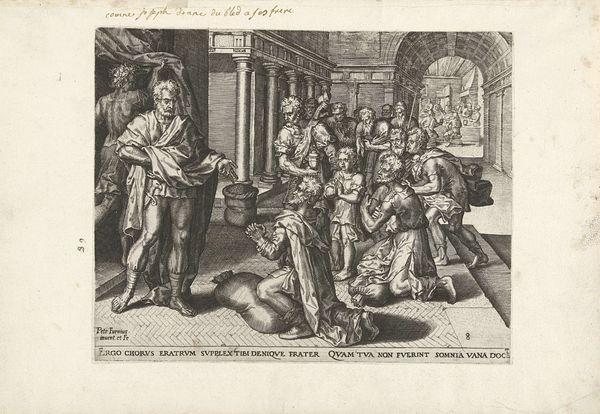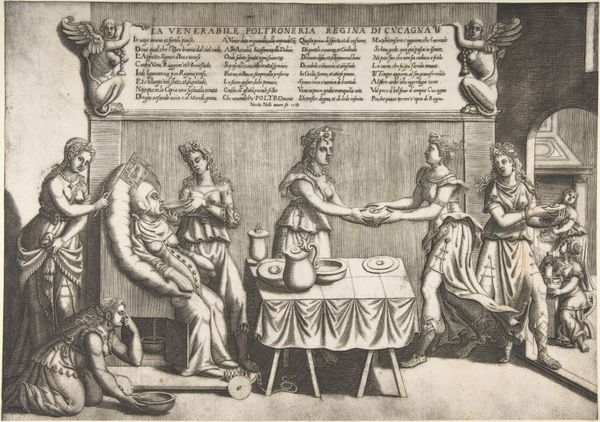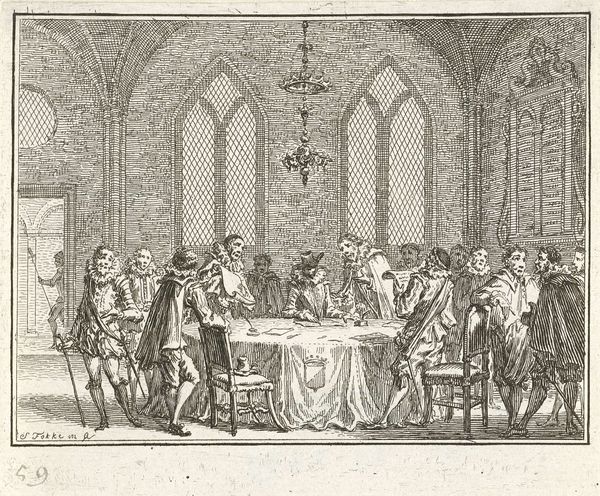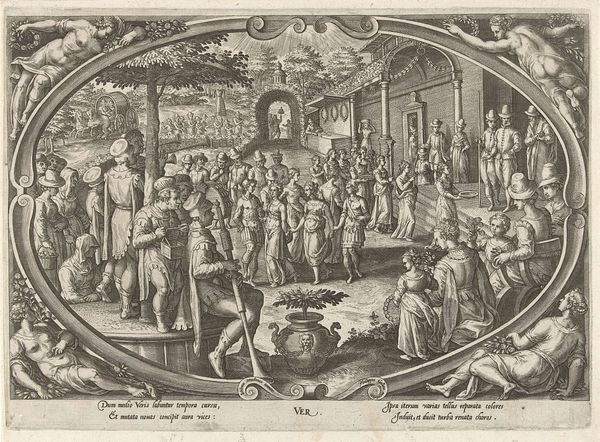
print, engraving
#
narrative-art
#
pen drawing
# print
#
figuration
#
line
#
history-painting
#
northern-renaissance
#
academic-art
#
engraving
Dimensions: height 296 mm, width 367 mm
Copyright: Rijks Museum: Open Domain
Curator: Here we have "Laatste Avondmaal," or "The Last Supper," an engraving dating back to 1552, currently housed in the Rijksmuseum. It's attributed to Monogrammist AI from the 16th century. Editor: Whoa, my first thought is the intensity. All those eyes! It feels very busy and almost a bit theatrical, don't you think? So many figures packed into a relatively small space. Curator: Precisely! The piece is characteristic of the Northern Renaissance, with its emphasis on intricate detail and dramatic narrative. It aims to capture that pivotal moment in Christian theology: the last meal of Jesus with his apostles before his crucifixion. Consider how the artist has packed the scene with biblical and cultural references. Editor: Yes, you can definitely feel the weight of history, both in the subject matter and the execution. The line work is so precise, almost obsessive, in creating that effect. The artist has chosen a complex style in an already highly emotional theme; you get a tangible sense of apprehension but also, I suppose, of divine purpose. There is a story playing out! Curator: The symbolism here is multifaceted. Notice the expressions on each of the apostle's faces. Some are shocked, some contemplative, and some appear altogether oblivious, perhaps foreshadowing the impending betrayal. Even the placement of Judas is subtly distinct, usually set away or in shadow depending on different traditions of the time. Editor: I hadn’t noticed Judas! Sneaky, very sneaky. It is almost voyeuristic – but maybe also comforting somehow. There’s something universal in its themes of loyalty, betrayal, and sacrifice. Also, let's not forget it does depict a feast! It's a shared meal before parting and each component seems charged with symbolic weight. What I am also trying to say, that despite the story being told it's really the artful technique in this little piece of engraving magic that stays with you after you are long gone. Curator: Ultimately, "The Last Supper" is not merely a religious depiction; it's a cultural artifact that offers insights into the societal values, anxieties, and artistic conventions of 16th-century Europe. Editor: A real emotional snapshot etched in lines of time, a bit haunting and deeply compelling! Curator: Indeed, it resonates not only as a theological narrative but also as a human drama, rendered with impressive skill and depth.
Comments
No comments
Be the first to comment and join the conversation on the ultimate creative platform.
